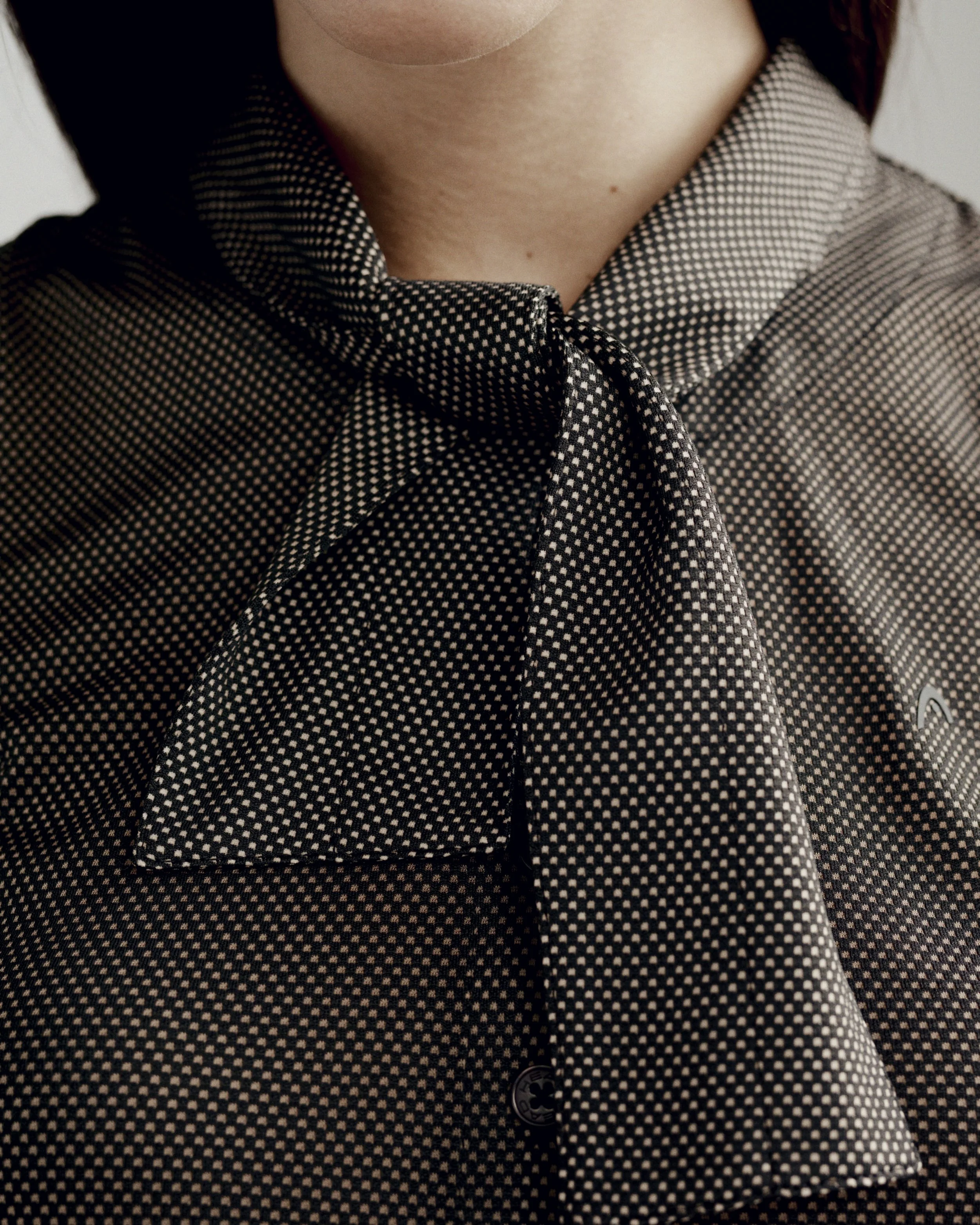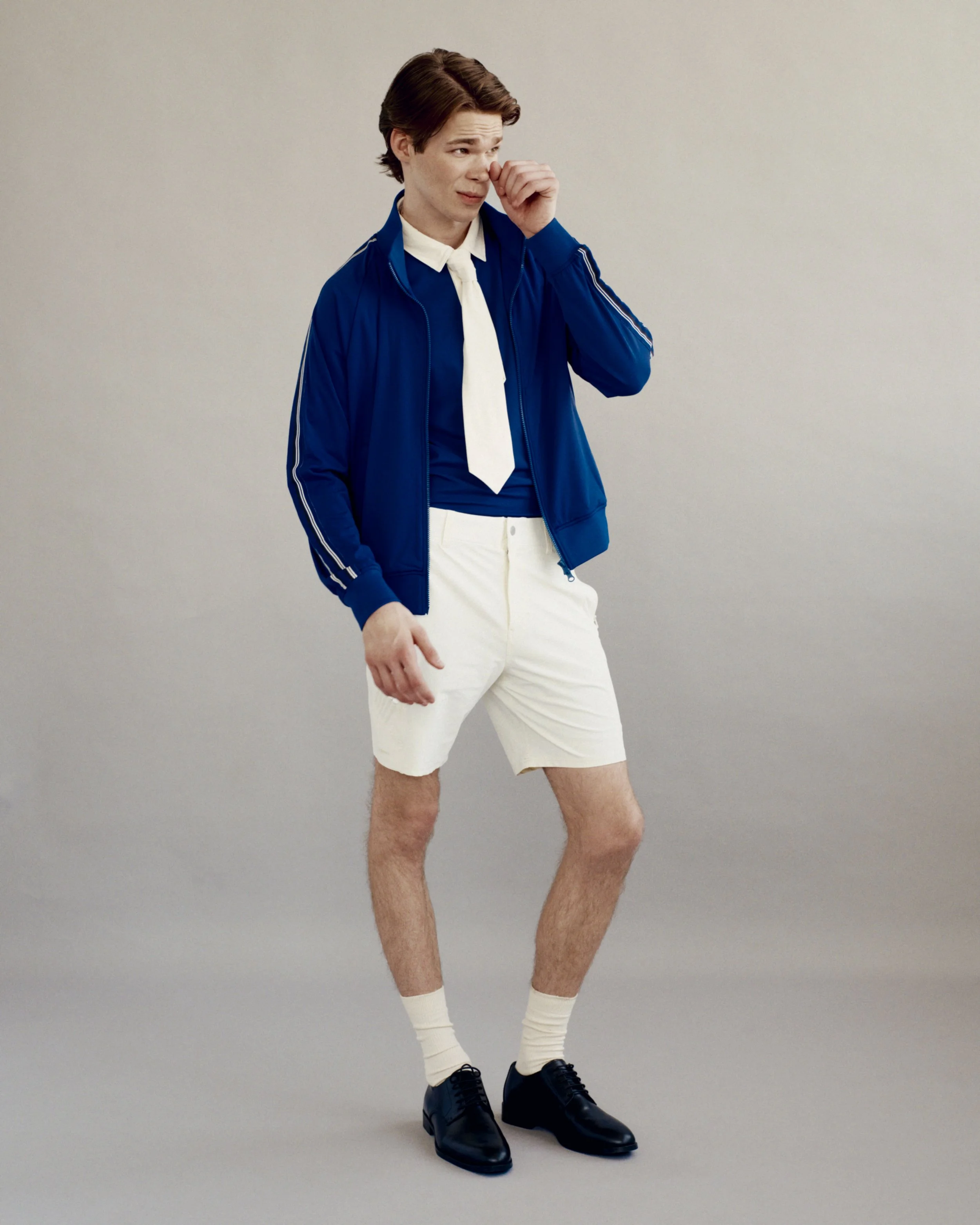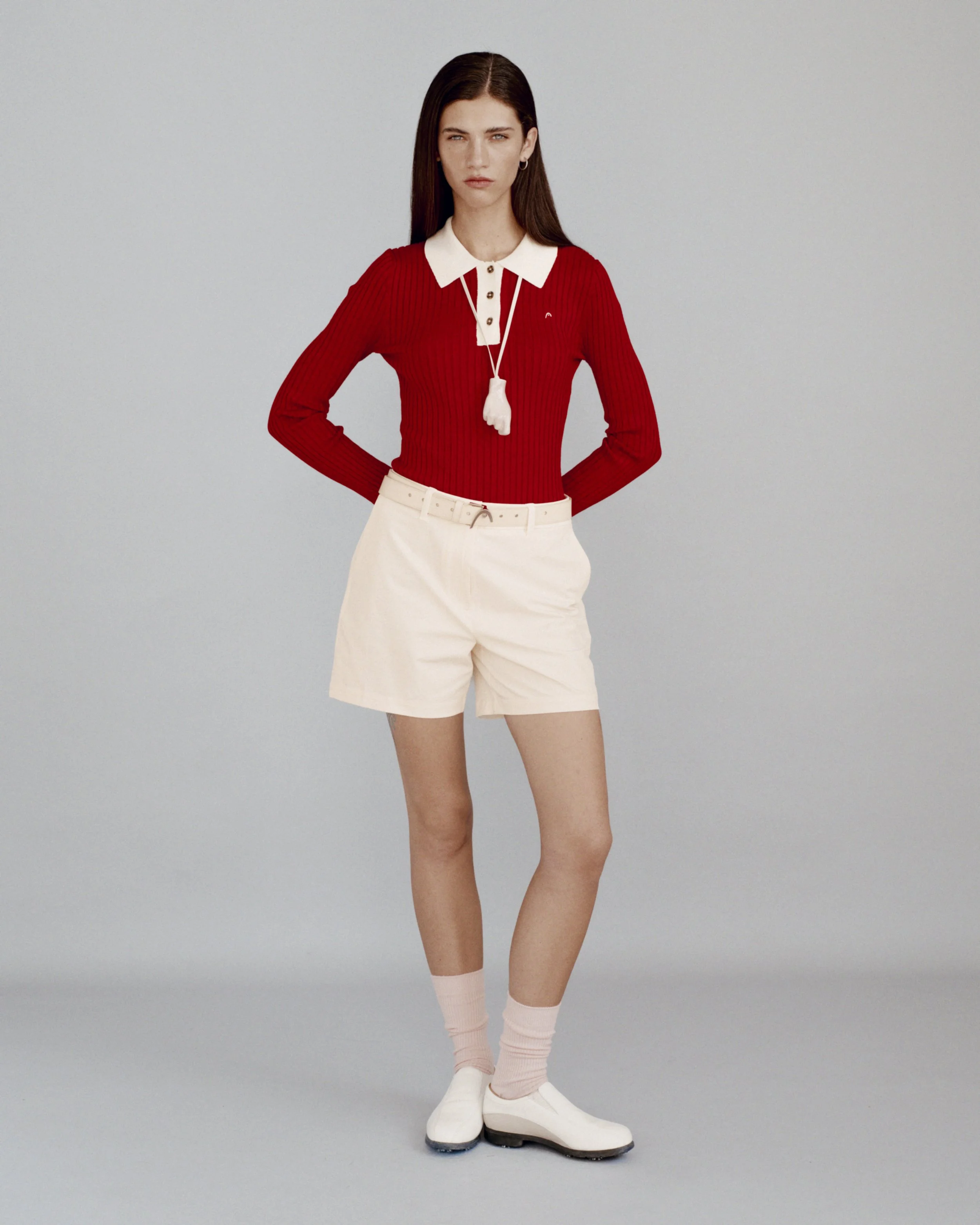DESIGNER HIGHLIGHT: KA HO KAM WITH HEAD GOLF
AUGUST 7, 2025
“There’s so much potential to push the boundaries. Over time, designers can introduce new ideas to the field—step by step. I don’t believe in doing anything too aggressive or making people feel uncomfortable. It’s about helping customers understand what you’re doing, offering them a storyline, and gradually guiding them to see where things might go.”
- Ka Ho Kam
Ka Ho Kam’s Golfwear Revolution: Fashion, Function, and Freedom
By J.L. Sirisuk
At Paris Golf Gallery during Men’s Fashion Week, among pine tree prints and pocketed knits, HEAD Golf’s latest collection by designer Ka Ho Kam felt like a stylish rebellion served with a smooth swing. Known for his background in designer wear, Kam brings sharp tailoring and intentional craft to golfwear—reshaping it into something that’s not just functional but wildly wearable. These are pieces that move seamlessly from the green to the gallery to the party, bridging performance with elevated everyday cool. Each collection from Kam is guided by a sense of place. Last season it was the Arizona desert, this season its pine forests and local wildlife—bunnies, eagles, textures of terrain reinterpreted into sport-ready silhouettes. But there’s also something deeper happening here: a nudge to see golf not just as a tradition-heavy sport, but as a growing culture—one shaped by community, environment, and a new kind of openness. It’s golfwear with story, soul, and a wink of subversion.
As you know, I absolutely love your collection. I wanted to rewind a little bit. Before HEAD Golf, before your fashion career, what did creativity look like when you were growing up?
I started visual arts when I was in school, so it took me about six years of preparing before it led me to fashion. I didn’t really have a fashion sense when I was still in high school. When I turned 17 or 18, I kind of sensed a cool way to express my understanding ofarts or personality was through clothing. So that’s the reason why I was working on a portfolio and submitting it to different colleges worldwide. That was my entry into fashion.
Were there any other creative influences? Any artists? Doesn’t even have to be fashion designers.
I love watching Wes Anderson’s movies, those kind of colors, the kinds of storylines.
Your background is rooted in high end women’s fashion. You were at Marc Jacobs, and Narciso Rodriguez. Before stepping onto the course, how has that influenced how you approached designing for HEAD Golf, a traditionally more conservative sport?
Yes, definitely. I would say golf is probably one of the most conservative sports. But once I stepped into this work—researching functionality, fabrications, and considering what modern golf aesthetics could be—it really changed my mindset about the sport. There’s actually a lot of room to be creative. For example, people are starting to use more knits now, which is something I focus on heavily in both the women’s and men’s collections. I pay attention to all the details, like pocketing—for instance, our men’s pants and shorts feature a special tee pocket for balls, making storage easy. There’s so much potential to push the boundaries. Over time, designers can introduce new ideas to the field—step by step. I don’t believe in doing anything too aggressive or making people feel uncomfortable. It’s about helping customers understand what you’re doing, offering them a storyline, and gradually guiding them to see where things might go—what we were doing two years ago compared to five years in the future. Giving them space to digest what you’re bringing to the sport is key. That’s how I believe people can become more open-minded to how golf, and sportswear overall, can evolve.
Your collection is very style conscious. It’s not what I’m used to seeing in terms of golfwear, but it’s also quietly rebellious. What story were you trying to tell through your designs?
Through my design I always want to take people through travel experiences. Not many brands are trying to do a storyline based on travel. Our golfers love playing at different courses because there are significantly different changes of the environment at each course. That’s a huge change. So that’s the reason why it’s been so attractive to each golfer, based on each course or different environment. Last season, for example, I focused on Arizona. So people will play in the desert, seeing all the cactus. This season we’re playing around pine trees. You will see different bunnies. You will see eagles. So animal changes, landscape changes – that will change the whole vibe, giving you a different perspective, to understand the local heritage. A lot of things are surrounded by golf that people might just keep ignoring. A lot of people working at the course. A lot of people contributing to the sport. Not just seeing the athletes, but actually seeing people are gathering together, having community engagement and making this sport so different.
Was there a specific course or you had in mind when you were designing this collection, for that emotional connection?
I won’t say there are the specific ones since I was focusing on the state. There are a lot of phenomenal golf course designs. Last season we were looking at True North when I designed the collection. That’s really stunning. I also like to be more open-minded, to look at different landscape designs and bring what will be fun from the course and make it visually present through the collection, letting different golfers see the way we look at the sport.
Earlier you mentioned the tee holder in the pockets. I like that this collection has functional flourishes, but with runway-worthy tailoring. Was there a design moment where fashion and performance finally clicked for you?
It’s about striking the perfect balance between fabrication and functionality, or even between design detail and the overall aesthetic you want to bring into the collection. I usually begin with fabric development, working closely with the raw materials team at the mills to decide what kind of fabric we’re introducing for the season, and what textures or functionalities we can achieve through structure or finishing. Once the fabric’s functionality is defined, we build the line around it—deciding how each material fits across different categories and products. Functionality drives the entire process, which is why our fabrics are so unique. That’s often why people come to us—they can’t find these materials anywhere else. Our fabrics are made specifically for us. From that solid foundation of functionality, I start to layer in the graphic elements, collaborating with artists, shaping the seasonal storyline, and adding playful accessories like animal crochets to complete the look.
There’s so much innovation, especially with the sustainability element. What does sustainable luxury mean to you in this context?
Reuse is really important. So that’s the reason why I work with Serona and Coolmax, so we upcycle and recycle everything. After a few years, once it’s in the soil, the material should be able to dissolve naturally so they won't cause any trash or be in the landfill. Additionally, when we design women’s skirts or dresses, we separate the inner lining from the skirt itself. Most brands sew them together, but we avoid that because if one part—like the skirt or the inner shorts—gets damaged, people often have to throw the whole piece away. That’s exactly what we want to prevent. You can also wear our undershorts to the gym or for any kind of exercise—they’re not just limited to golf. We consider them part of a broader sportswear category.
When you look at your entire collection, is there one piece that kind of surprised you?
Yes, it’s the Fading Pleats Skort. It has two pine trunk prints at the front and fading pleats. If I wasn’t designing this specifically, I don’t think I would have come up with the idea. Working with artist Stephen King, we created the pine trunk print and used pleats to bring the 2D print into a 3D form. It looks quite different when a golfer wears it and moves on the course—the skirt’s volume creates an elegant moment while playing golf. When I visited Paris Golf Gallery and saw your collection, I felt this pulse - like a new subculture around golf. The environment felt open and diverse.
I was wondering if you’ve also felt that shift and do you see HEAD Golf as part of that new movement?
I wouldn’t say we’re trying to start a revolution. Our brand aims to elevate and define what the sport should be. Yes, that’s what HEAD stands for. We’re sharpening the gears, creating something different, something that people might be overlooking right now. I wouldn’t call it a movement. It’s more about elevation than revolution.
You once mentioned wanting to see Zendaya wearing your designs. Are there any other individuals—on or off the course—whom you’d love to see in this collection, someone you feel truly embodies its spirit?
There is actually one women’s golf player that we are really interested in called Lily Muni. She is playing PGA as well and she has a very good fashion sense. I can definitely see our collection on her.
How do you feel when you look at this collection?
I see this collection as my full step toward elevating the sport. I’m really glad to see that many buyers, women golfers, and even male golfers love the products I’ve created for them. The first collection has launched, and the feedback I’ve received about the finishing, trims, and overall garment construction has been phenomenal. I truly appreciate witnessing the step-by-step progress I’m making to push and elevate the sport the way I believe it should be. It’s been well worth it.












